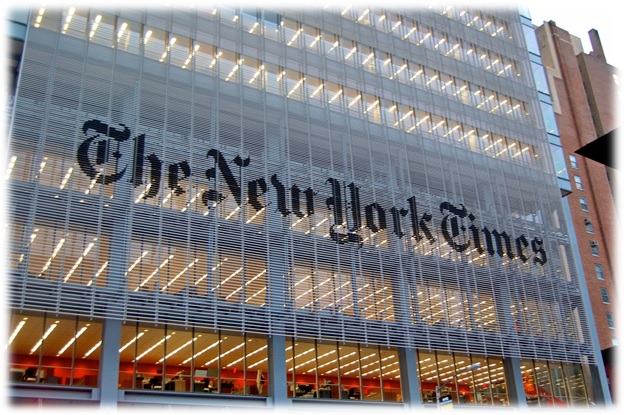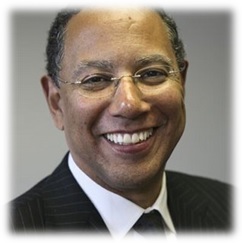 If you think that digital disruption has hit the radio industry hard, think about your local newspaper. Across the board, the Fourth Estate has suffered greatly from “shrinkage,” due to the onslaught of online news, and myriad options that offer information for free. Want ads have been totally decimated by the internet, as well as the “currency” of real-time information available on mobile devices at the touch of an icon. And many Millennials barely know what a newspaper is.
If you think that digital disruption has hit the radio industry hard, think about your local newspaper. Across the board, the Fourth Estate has suffered greatly from “shrinkage,” due to the onslaught of online news, and myriad options that offer information for free. Want ads have been totally decimated by the internet, as well as the “currency” of real-time information available on mobile devices at the touch of an icon. And many Millennials barely know what a newspaper is.
But then there’s The New York Times. It’s not as though the paper that has traditionally promised to publish “all the news that’s fit to print” has had an easy time of it. They’ve suffered from most of the same maladies that small town papers have endured, not the least of which is staffing cutbacks as well as losing many big names along the way. They’ve also struggled with monetizing their digital assets, despite the fact that more people access their news product online than from the physical paper.
 But they’ve also channeled the pain of change into innovative solutions and experiments. They haven’t all worked, but they are attempting to generate dollars from different sources, including “Times Journeys” – travel excursions to fascinating destinations like Cuba, Iran, and the Galapagos Islands – their version of “non-traditional revenue.” Travelers are accompanied by a Times journalist or special expert, making it a special experience.
But they’ve also channeled the pain of change into innovative solutions and experiments. They haven’t all worked, but they are attempting to generate dollars from different sources, including “Times Journeys” – travel excursions to fascinating destinations like Cuba, Iran, and the Galapagos Islands – their version of “non-traditional revenue.” Travelers are accompanied by a Times journalist or special expert, making it a special experience.
And while many criticize The Times for a wide range of reasons, they may be turning a corner. And their travails might just help and inspire certain radio companies that are facing many of these same dilemmas. A recent Poynter article by Benjamin Mullin, “The New York Times of the future is beginning to take shape,” explores these efforts to redefine and reboot the brand and the way it goes about its business.
The article lists six moves The Times is making to reimagine its news product, from a memo sent to staffers last week from Executive Editor Dean Baquet. And the first four translate very nicely to many radio stations and the companies that own them. So now that we’ve intercepted this staff memo, what can we learn about The Times’ makeover that applies to radio?
1. A shift away from commodity coverage. “The digital news marketplace nudges us away from covering incremental developments — readers can find those anywhere in a seemingly endless online landscape. Instead, it favors hard-hitting ‘only-in-The New York Times‘ coverage: authoritative journalism and information readers can use to navigate their lives.”
Radio – both commercial and public stations – needs to address these very same questions. When music or talk programs are available in myriad places and sites, what is it about what your station offers that listeners cannot find anywhere else? That may be a tough order when everyone’s copy of “Exes & Ohs” or “Born To Run” sounds the same.
A key is to stop acting like a commodity with a sound that barely varies day in and day out. What’s proprietary about the ways in which your station presents its music or talk programming? What is it that your station brings to the listening experience that makes it special and unique? Whether it’s your personalities or the way you put the music together, taking an “only on Z100” or “only on public radio” approach is a great place to start. That’s what The Times is trying to capture, and there’s no reason why radio stations can’t strive to do the same thing.
2. A reimagined plan for covering New York City. “What should coverage look like if we are going to hold onto our mission of aggressively covering the mayor and the governor, and yet still produce a report that makes sense given that fewer than half of our readers live in New York?”
The Times is one of the nation’s (if not the world’s) great newspapers. But it’s obvious their research is similar to yours. Their readers are interested in news of the world, the election, and big issues like education and immigration. But they also care very dearly about coverage of their hometown. Whether its Manhattan or Moline, people are invested in what’s going on where they live. Providing that reflection of your local community is, in fact, part of the secret sauce that can make your station special and help separate it from national networks, syndicated shows, satellite radio, and streaming radio sites.
And unlike The Times, well more than 90% of your audience resides in your metro area. And for those who are listening via the stream from other markets and other countries, chance are good they’ve chosen your station because they want to hear your local flavor. When your show or station sounds like it could be in Any Market, U.S.A., you’re not going to have much impact.
3. Less stilted writing and more visual stories. “[Masthead editors] have been meeting with department heads and others to collect ideas about how to build a newsroom that produces fewer perfunctory articles and a greater array of story forms, including more visual journalism, and conversational writing.”
And in radio terms, this translates to not sounding mechanical, but instead looking for a delivery and style that doesn’t sound like everyday, pedestrian radio. Listeners can tell when a DJ, personality, host, or show is engaged, communicating, and connecting. And they can also tell when the sound is artificial, contrived, and mechanical.
And there’s the “visual journalism” piece that Baquet emphasizes. Radio programmers might think about this as photos or even video that enhance the station sound and experience. The Times continues to expand the visual aspect of their story coverage, most commonly using their website as a source for picture galleries and videos in all sections of the “paper.” They also use the extra “real estate” available from their web resources to expand coverage, and make it more colorful.
For radio, this means being more colorful and cinematic on the air, but also considering how visuals and video can enhance the station, its music, its personalities, its city of license, and yes, the people who live there. How can these visuals enhance station events, concerts, and festivals? How can tools like Facebook Live help take the audience “backstage” to create memorable moments. Consumers want a richer experience, and great radio stations that want to still be around and healthy for another decade are already doing these things.
And how can stations and personalities use the expanded potential of websites, social pages, podcasts, and HD2 channels to provide an even richer atmosphere when a big concert comes to town or there’s a bit local news story?
4. A new model for copy editing. “[Editor] Susan Wessling is leading a team that is examining whether our copy desks are structured properly for an era when stories no longer move at the rhythms of print.”
This may be a bit obtuse, but The Times is obviously questioning the overall structure of its news assigning, gathering, and prioritization. Baquet is asking his troops to reimagine the overall structure of how stories are conceived, put together, and covered. It’s painful because they’ve done all this in a certain, familiar way for decades (or probably the same way since the 1800s). These traditions have been handed down for generations, which is all the more reason why these rules need to be questioned, examined, and ultimately changed.
And so it is with the way we’ve traditionally run our radio stations, how we design and apply research, how music meetings are structured, and how we present our programming, whether it’s spoken word or music-based. This is the hardest part of the puzzle, and it looks like The Times is trying to grapple with it. Props to them.
None of us has all the answers, but questioning our basic modus operandi is the beginning of discovering new ways of creating and marketing content. The Times – out of necessity – is making bold moves, and is striving to hold onto its tradition of great journalism but turn important corners as well.
The publishing industry sits at a more precarious position than radio – another great reason why we can learn from their angst, their experimentation, their setbacks, and their victories.
Thanks to “The Old Gray Lady.”
- Why “Dance With Those Who Brung You” Should Be Radio’s Operating Philosophy In 2025 - April 29, 2025
- The Exponential Value of Nurturing Radio Superfans - April 28, 2025
- What To Do If Your Radio Station Goes Through A Midlife Crisis - April 25, 2025




Really good insight. The NYT has boldly jumped in to make mistakes (“break things fast” in the parlance of Facebook founders) and try new things- Op-Docs comes to mind. Risk aversion is no safer than outright exposure at this point – for radio as well. The Times even develops podcasts out of once weekly essays (the new Modern Love column podcast through WBUR/Boston). Perhaps an opportunity awaits with similar joint ventures in other individual radio markets on a local level. “Listener” generated content (with some small payments to contributors for their local efforts) could really contribute to growth in whatever positioning the station seeks.
Love your line of thinking, Laura. Thanks for the comment & adding to the conversation.
As always, another excellent article. To me, newspapers are still an important part of daily life and I still enjoy holding one in my hands and reading it. But I understand that times have changed and the media, be it print or radio must change with it. However, I don’t believe change of any kind can be successful without emphasizing the human touch. Add to that a dose of creativity and innovation. Buying and putting on a new pair of running shoes isn’t enough. You need to run or at least walk. Just standing there will result in only one thing. Everyone, even the slowest of walkers will pass you.
Curt, thanks for the kind comment and for chiming in on this topic. It will be fascinating to watch how The Times evolves.
Fred, love your admonition to “stop acting like a commodity with a sound that barely varies day in and day out” and your question, “what’s proprietary about the ways in which your station presents its music?” Here’s some thoughts on making the music listening experience special and unique: https://billmcmahonblog.blogspot.com/2014/07/listen-to-music-share-vibe-make.html
Bill, thanks for the comment and appreciate you posting your blog.